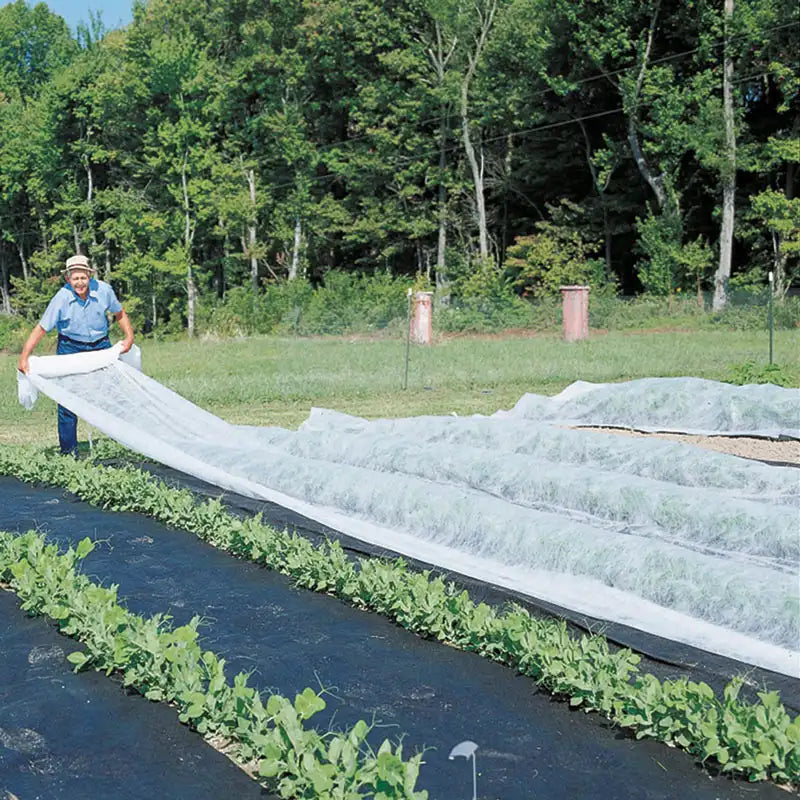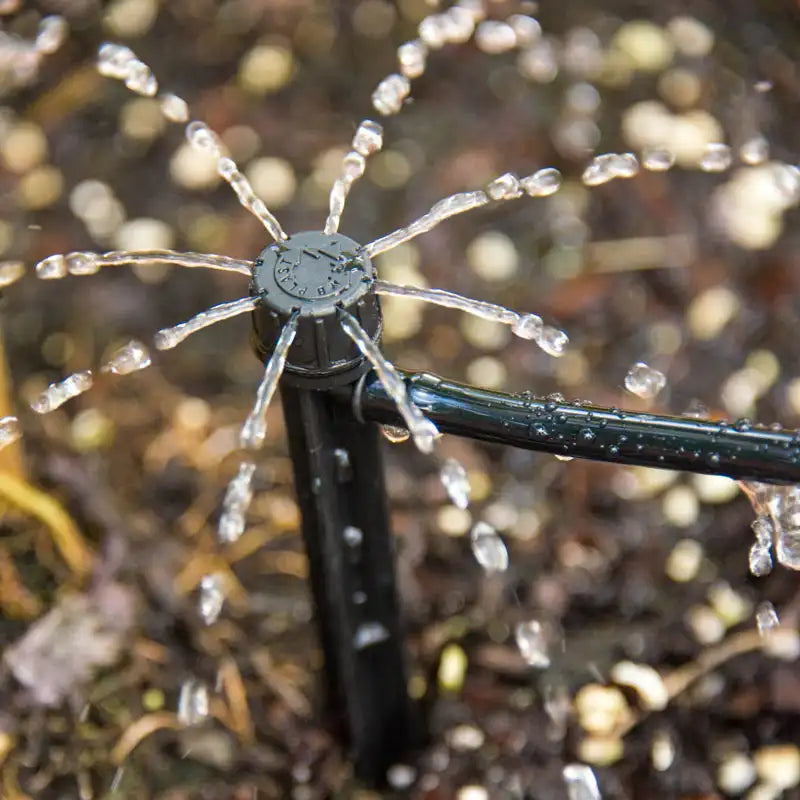How to Ripen Up that Last Tomato of Fall
Q. Lynn in Akron PA (Lancaster County) writes: "I watch your show on PBS and enjoy it very much. I bought an heirloom tomato plant this Spring but lost the tag. It's a small tomato, but I don't know what kind it is or what it should look like when ripe. (It was very slow to grow early on.) It looks like the fruits are dark green and purple when unripe and turn an orange, yellow and green when ripe (which has taken all summer!). There are about 30 tomatoes of various sizes on the plant, which is still in the ground, and I know that time is running out. Thanks for any help you can provide!
A. Lynn sent us a bunch of photos, which we have posted here at the Gardens Alive! website. We'll show it to our Facebook Friends as well and see if anyone can ID this incredibly confusing tomato, which has me baffled. The orange, yellow and green ones, which she feels are the ripe ones are shaped like normal tomatoes and look unripe to me. The dark green and purple (almost black) ones are shaped decidedly like eggplants and look ripe to me. I attempted an ID, but Lynn didn't think it matched.
So kats and kittens, take a look at the photos and tell us what you think. As an incentive, I'll send a signed copy of my tomato book (The You Bet Your Garden Guide to Growing Great Tomatoes) to the listener/viewer who sends in the first guess that Lynn agrees with. Send those guesses to ybyg@wlvt.org.
OK; let's move on to some tips on ripening up those last tomatoes of fall.
#1: Pinch off any flowers on the plants you want to keep producing ripe fruits. Same for teeny tiny tomatoes; there's very little chance they'll grow big before frost calls the game.
#2: Be realistic. Not only are the nights getting cooler, but the hours of daylight are also now markedly shorter than they were back in June, when those of us who were forced to go to bed while it was still light out as children now doggedly attempt to defy that mandate no matter how tired we are and wind up falling asleep on the couch. If you're uncertain about a small tomato, pull it off to devote more of the plants' energy to the ones that are close to full size.
#3: Cover the plants with row covers or sheer curtains, not plastic or anything heavy. Professionally made row covers trap heat but allow sunlight and water to pass through. The right type of sheer curtain material will do the same. But don't use clear plastic, as you might inadvertently cook the plants on a cool but sunny day. And don't use anything you can't see through like a light summer sheet, for the reason explained in #4.
#4: Put the protection on and leave it on. Row covers are designed to stay on the plants night and day. If you foolishly believe you can throw a blanket over the plants at night and remove it first thing in the morning, you'll likely dislodge most of the fruits or kill the plants before Nature has a chance to.
#5: Do not prune off any green leaves. They are the solar panels attempting to use the greatly reduced hours of sunlight to keep things moving along.
#6: Water when dry. Plants that are fully hydrated can survive lower temperatures than dry ones. If you go a week without rain, water each plant slowly at the base for an hour using a hose set to drip slowly.
#7: Don't delay the harvest. Once a tomato is half-colored up it is certain to finish ripening indoors. Just sit these 'breakers' out on the kitchen counter at room temperature.
#8: Become a Weather Channel stalker. Keep an eye on upcoming predicted temperatures from both national and local sources and trust the one you like the least.
#9: Be prepared to call the game. If nighttime temperatures are predicted to dip below 40 degrees F, strip the plants and bring the fruits inside. The only exception is if the weather guessers predict one night that could dip to 38- or 39-degrees F, bookended by decent nighttime temps. In this case, harvest any tomato that has begun to change color and roll the dice on your greenies. Remember that daytime temps mean nothing and that tomatoes turn mealy when exposed to low temps, which is why you are NEVER supposed to put your love apples in the fridge.
#10: Again, be realistic. It isn't just frost we're fighting; its temps below 40. And I'm being generous here. The smart money would suggest you harvest everything BEFORE temps are predicted to dip below 40. Once tomatoes have reached full size there's a darn good chance they will slowly ripen up indoors. Or follow the advice of the famed McGrath sisters (no relation) and make fried green tomatoes!
A. Lynn sent us a bunch of photos, which we have posted here at the Gardens Alive! website. We'll show it to our Facebook Friends as well and see if anyone can ID this incredibly confusing tomato, which has me baffled. The orange, yellow and green ones, which she feels are the ripe ones are shaped like normal tomatoes and look unripe to me. The dark green and purple (almost black) ones are shaped decidedly like eggplants and look ripe to me. I attempted an ID, but Lynn didn't think it matched.
So kats and kittens, take a look at the photos and tell us what you think. As an incentive, I'll send a signed copy of my tomato book (The You Bet Your Garden Guide to Growing Great Tomatoes) to the listener/viewer who sends in the first guess that Lynn agrees with. Send those guesses to ybyg@wlvt.org.
OK; let's move on to some tips on ripening up those last tomatoes of fall.
#1: Pinch off any flowers on the plants you want to keep producing ripe fruits. Same for teeny tiny tomatoes; there's very little chance they'll grow big before frost calls the game.
#2: Be realistic. Not only are the nights getting cooler, but the hours of daylight are also now markedly shorter than they were back in June, when those of us who were forced to go to bed while it was still light out as children now doggedly attempt to defy that mandate no matter how tired we are and wind up falling asleep on the couch. If you're uncertain about a small tomato, pull it off to devote more of the plants' energy to the ones that are close to full size.
#3: Cover the plants with row covers or sheer curtains, not plastic or anything heavy. Professionally made row covers trap heat but allow sunlight and water to pass through. The right type of sheer curtain material will do the same. But don't use clear plastic, as you might inadvertently cook the plants on a cool but sunny day. And don't use anything you can't see through like a light summer sheet, for the reason explained in #4.
#4: Put the protection on and leave it on. Row covers are designed to stay on the plants night and day. If you foolishly believe you can throw a blanket over the plants at night and remove it first thing in the morning, you'll likely dislodge most of the fruits or kill the plants before Nature has a chance to.
#5: Do not prune off any green leaves. They are the solar panels attempting to use the greatly reduced hours of sunlight to keep things moving along.
#6: Water when dry. Plants that are fully hydrated can survive lower temperatures than dry ones. If you go a week without rain, water each plant slowly at the base for an hour using a hose set to drip slowly.
#7: Don't delay the harvest. Once a tomato is half-colored up it is certain to finish ripening indoors. Just sit these 'breakers' out on the kitchen counter at room temperature.
#8: Become a Weather Channel stalker. Keep an eye on upcoming predicted temperatures from both national and local sources and trust the one you like the least.
#9: Be prepared to call the game. If nighttime temperatures are predicted to dip below 40 degrees F, strip the plants and bring the fruits inside. The only exception is if the weather guessers predict one night that could dip to 38- or 39-degrees F, bookended by decent nighttime temps. In this case, harvest any tomato that has begun to change color and roll the dice on your greenies. Remember that daytime temps mean nothing and that tomatoes turn mealy when exposed to low temps, which is why you are NEVER supposed to put your love apples in the fridge.
#10: Again, be realistic. It isn't just frost we're fighting; its temps below 40. And I'm being generous here. The smart money would suggest you harvest everything BEFORE temps are predicted to dip below 40. Once tomatoes have reached full size there's a darn good chance they will slowly ripen up indoors. Or follow the advice of the famed McGrath sisters (no relation) and make fried green tomatoes!



